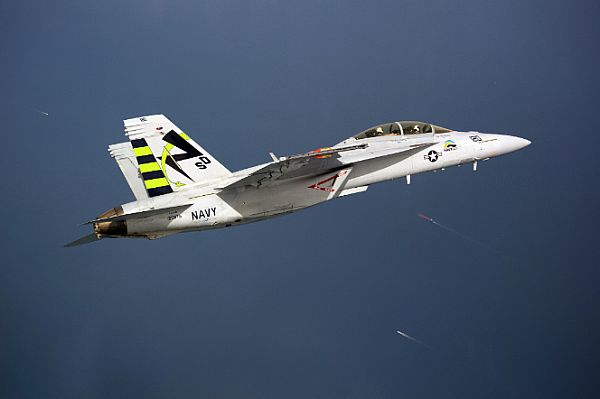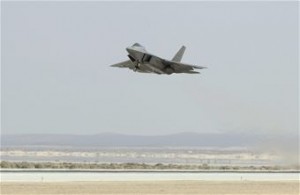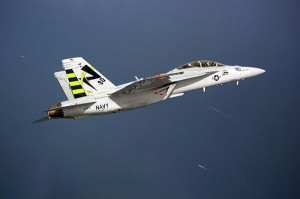
Fueling the Future? Military’s Biofuels Program at Risk
Oil – A risk for the U.S. Military
The two wars in Iraq and Afghanistan over the last decade have shown the military the tactical risk of energy use. Tactically, oil dependence results in a long and vulnerable supply chain; casualties are taken in an estimated 1 of every 24 fuel convoys in Afghanistan. Strategically, oil dependence is a different question – because of how much oil the U.S. uses, American foreign policy remaind intertwined with oil producing regions like the Middle East. For the military, the strategic vulnerability of oil dependence relies on making sure that energy can get to the battlefield.
The 2010 Quadrennial Defense Review (QDR) showed the DoD’s new thinking on energy security when it stated: “Energy security for the Department means having assured access to reliable supplies of energy and the ability to protect and deliver sufficient energy to meet operational needs.”
A key part of having assured access to “reliable supplies of energy” is the understanding that dependence upon a single source of energy, oil, for almost 80% of the DoD’s energy needs poses a long-term risk. Oil is currently irreplaceable; without petroleum-based fuel, fighter jets do not fight, drones cannot fly, and Naval Battle Groups cannot leave port. There is simply no alternative. We know that in the short-term there is little danger that the military is going to be unable to access oil (the world produces almost 90 million barrels per day – and the DoD only requires about .5% of that). However, mitigating risk is about strategic foresight: there are possible scenarios in which world oil production peaks, or in which hostile actors close important choke points like the Strait of Hormuz or the Straits of Malacca to oil transit. Moreover, the U.S. military is forward deployed around the world – some places may not be able to receive the oil in the future.
In the shorter-term, anyone who has bought gasoline over the last four years knows how oil’s price volatility has caused rapid price swings, upsetting both household and Defense budgets. The Navy has estimated that every $1 increase in the price of oil results in an unbudgeted increase of $30 million. That is money that cannot be spent on training, equipment, or operations.
Biofuels to Mitigate Strategic Risk
The best way to mitigate the strategic and budgetary risk that oil presents is to develop a competitor as a way to mitigate that risk. Developing new technology means that biofuels can directly replace refined petroleum products without changing engines or equipment.
The biofuels being developed for military use today are not similar to the ethanol we use day-to-day as an additive to the gasoline that fills our tank. The military is not planning to run their operations using corn-based ethanol. Instead, they are working with companies to develop fuels that are substantially identical – or even superior – to current petroleum-based fuels. Early results of Air Force studies show that biofuels actually burn cleaner and cooler in aircraft engines, potentially adding years to their life span. Feedstocks for these next-generation biofuels can range from woody biomass to algae, or from camolina to even waste animal fats.
However, like any developing technology, today’s emerging biofuel industry is characterized by high costs and low scale, relative to oil. The technology has proved its effectiveness, but prices have not yet been brought down to a competitive level – a time commonly called the ‘valley of death.’
The Military’s Biofuel Plans
However, unlike ordinary consumers or businesses, whose sole purpose is buying the cheapest product, the military has another requirement: assured access to energy, as stated in the QDR. The military has a mission to ensure that it has access to energy, and helping to develop a biofuel industry is a key part of that mission.
The Navy has been the most aggressive of the branches in developing a biofuel industry – their plan to sail a “Great Green Fleet” in 2016 that would be fueled solely by biofuels and nuclear power. This summer, the Navy is preparing for a test run of this green strike group during the biennial Rim of the Pacific exercise around Hawaii from June 29 to August 3. The Defense Logistics Agency (DLA) has already purchased 450,000 gallons of advanced drop-in biofuel for this test from Dynamic Fuels, LLC (a joint venture between Tyson Foods, Inc. and Syntroleum Corporation) and from Solazyme.
In addition, to support the creation of a domestic biofuels industry, the Navy, working in conjunction with the Department of Energy and Agriculture, has announced plans to directly invest in private sector companies under the authority of the Defense Production Act (DPA), a 1950 law that allows the government to provide seed money for the development of new technologies. The DPA proposal would invest $510 million over 3 years directly in biofuel production facilities. The grants would be evenly matched with private-sector funding. This is not an unprecedented investment: since only the 1980s, the DoD has used the DPA to help develop a number of national security-related industries, including semiconductors, radiation-hardened microelectronics, and superconducting wires.
Pushback from Congress
While the DoD was building its biofuel capability, it has run into political opposition from both the House and Senate Armed Services Committees. They have added an amendment to their authorization bills this year stating that the Military is prohibited from “the production or purchase” of any alternative fuel if the cost exceeds “traditional fossil fuel.” The Senate bill goes even further by stating that the DoD is prohibited from using the DPA to invest in biorefineries.
Chief of Naval Operations Adm. Jonathan Greenert wrote to Senators on the Armed Services Committee, saying: “The Navy needs flexibility to continue the testing and certification of all potential alternative fuel pathways to ensure the Navy has an ‘off-ramp’ from conventional fuel sources.” He noted, too, that alternative fuels will not be procured for operational use until they are price competitive with petroleum-based fuels.
Senator McCain (R-AZ), Ranking Member of the Senate Armed Services Committee said: “Adopting a ‘green’ agenda for national defense of course is a terrible misplacement of priorities.” And Representative Randy Forbes (R-VA) told Mabus, “You’re not the secretary of energy. You’re the secretary of the Navy.”
On the other hand, Senator Mark Udall (D-CO), said: “Some of my colleagues chose to stifle DOD’s incredible work on developing new energy technologies that will help to break our dependence on fossil fuels and protect our troops in harm’s way.” Udall has vowed to bring an amendment restoring the ability of the DoD to invest in biofuels when the Defense Authorization bill is brought to the floor.
What Happens Now?
ASP strongly believes that dependence on oil is a national security threat, and the military can play a key role in reducing the strategic risk presented by dependence on oil through developing a biofuel replacement for oil. Policymakers should understand that, given the relatively low amounts spent in this program, relative to the overall scale of the Defense budget, funding for a biofuels industry will have a significant long-term return on investment in greater security for the force.
Our military is vulnerable because of its dependence on oil. Emerging technology can overcome that dependence – not today or tomorrow, but over the next decade. We should not let this year’s short-term political fights undermine America’s long term security.









[…] Fueling the Future? Military’s Biofuels Program at Risk […]
[…] place to reduce demand for oil – like the increase in fuel economy standards or incentives to develop alternative fuels – will be very important in increasing America’s energy security. However, a release at this […]
[…] is investing in alternative fuels to mitigate risk. Currently, it is entirely dependent on fossil fuels for fueling its fleets. Supply disruptions […]